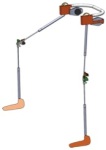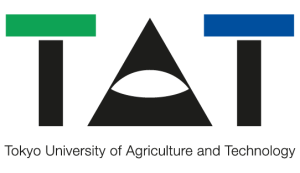lo trovate qui, in due lingue!
you can find it here, in two languages!

all rights belong to Bernard Marr, the author of this post
Life is short. Here’s the thing: Life is too short to put up with a job you hate, a boss who demeans you, or a company with no soul. Many people convince themselves that they can put up with a job or career situation that makes them unhappy because they need the income, because they don’t know if they can find another job, or for some other reason. But the truth is none of us knows how long we have on this earth, and spending too much of it in a bad situation will only make you miserable and regretful. If you’re in this situation, take a step today — no matter how small — toward a better situation.
Social networks matter. You might think that networking events are dull, that it’s boring to chat with coworkers around the watercooler, or that you’re simply a born introvert, but study after study confirms that social networks are vital to our success. In fact, the most successful people tend to have the broadest and most diverse social networks. The more time and effort you put into nurturing your social networks, the more successful you are likely to be.
Sacrificing your health for success or wealth isn’t worth it. Many driven, successful people have a hard time creating work/life balance and can end up burning out or developing serious health problems from stress and overwork. The truth is, it’s much easier to stay healthy than to heal from a problem or disease — and no amount of success or money can replace your health. Don’t take your health for granted and take steps to mitigate stress that could cause problems later.
None of the best moments of your life will take place looking at a screen. In our connected world, it’s tempting to let all the little screens we have access to dictate our lives. But you’ll never reach the end of your life wishing you’d spent more time checking email on your phone. Disconnect regularly and experience real life.
Never stop learning. With the rate at which technologies are changing today, if you decide that you are “done” learning, you will be left behind within a matter of years, if not sooner. The idea that you can’t teach an old dog new tricks is blatantly false, and you will never wake up and regret having invested in your mind by learning something new.
Diversify. Hand in hand with learning, if you stick to only doing what you know, or what you are good at, you may quickly find that you’re only good at one thing. We need to be agile, nimble, and interested in many different things. Otherwise, you could get stuck in a job or career you don’t love, or that goes with the times. Think of the taxi driver threatened by Uber or the customer service person replaced by a chatbot.
You can go fast alone, but you can go farther together. In other words, teamwork makes the dream work. Many people claim they don’t like to work in teams, but the ability to work well in teams is vital if you want to succeed. The idea of the solo auteur is a myth; every big idea needs a team to make it happen.
Worrying doesn’t achieve anything. The antidote to fear and anxiety is action and hustle. If you’re wasting time because you’re afraid to pursue an idea, speak up, or are worried what others will think of you, you won’t achieve your goals. If you push through the worry and the fear, however, and take action, you’ll almost always find that you were worried about nothing.
Failure is not an end. If you give up when you fail, you’ll never learn anything. Instead, look at failure as an opportunity, as the beginning of a new journey. If you do, you’re much more likely to try again and succeed at something else.
Happiness is a journey, not a destination. So many people put off their happiness; they think, “I’ll be happy when I get that job, when I lose that weight, when I’m in a relationship, when I’m out of a relationship…” and so on. But we can choose to be happy. Happiness is a habit and a choice. No matter what your situation, if you can approach it with an attitude of happiness, you will be more successful.

Il mio CV in italiano in formato Europass è stato aggiornato ed è ora disponibile nella sezione Curriculum Vitae 🙂
I can add a new publication to my (short) List of Publications:

I have also updated the list of my postdoctoral research interests, by adding a new section about 3D-printed components and mechanisms 😉

Un nouveau volet de Demain Chez Vous a été publié! Après le premier épisode, c’est au tour de mon projet de thèse 🙂
L’arthrose conduit à la pose de près de 70 000 prothèses du genou par an en France. Au fil du temps, la prothèse subit l’évolution des modes de vie du patient ce qui peut conduire au descellement de la prothèse ou à déséquilibrage des ligaments. Il est alors nécessaire de procéder à une chirurgie dite de reprise. Pour pallier ce problème une nouvelle génération d’implants orthopédiques instrumentés est en cours de développement à Télécom Bretagne. Le médecin pourra corriger la tension des ligaments en actionnant le système placé dans la prothèse.
Ce dispositif innovant et prometteur est développé à Télécom Bretagne au Latim, sous la responsabilité de Chafiaa Hamitouche.
I’ve added a brand new page to my blog! Just click here (or keep on reading this post) to know a bit more about my current research interests.
🙂
My biomedical and robotics engineering multidisciplinary background, along with the experience gained in the course of my doctoral program, allow me to accomplish different tasks. My main research interests are briefly summarized below.

A 3D interface developed in Unity3D (C# language) is proposed for the purpose of processing in real time the data collected by one Leap Motion Controller connected to a common personal computer. The movements required by the rehabilitation program can be recorded by the physiotherapist and saved by the software as a set of reference models. The user is asked to select the movement they wish to practice via the Leap Motion Controller, thus without any invasive external device. Throughout the whole rehabilitation exercise, the software is able to detect in real time the orientation of the user’s hand phalanges and palm; those data are compared to the reference model (white hand in the figure above) and the accuracy of the performed movement is shown in real time by means of three different colors (green, orange and red segments in the figure above). The speed and the difficulty of the exercises can be progressively adjusted to the user’s needs: this allows to continuously provide challenging exercises as well as to keep track of the user’s improvements in accuracy. Besides being extremely low-cost and non-invasive, the proposed 3D interface is really user-friendly and is mainly intended to speed up the whole rehabilitation process.

My current research focuses on the design and manufacturing of a lower limb exoskeleton for partial body weight support. Such assistive devices is intended to be proposed to the following two communities:
The key idea consists in joining the support provided by crutches and walkers to the advantages brought by a legged structure. The proposed lower limb exoskeleton should be as much portable as possible; partial body weight support should be continuously provided to the patient, so as to relieve a part of the efforts experienced by the lower limb muscles during daily life activities. The design must be at the same time robust and efficient, in order to provide support without affecting the user’s posture, balance and stability. Gait analysis is meant to be performed in real time during normal walking by processing the data of specific sensors (embedded in the shoe soles) collected by a compact Arduino system.

The WordPress.com stats helper monkeys prepared a 2015 annual report for my blog. Thank you very much, readers and followers! 🙂
Here’s an excerpt:
The concert hall at the Sydney Opera House holds 2,700 people. This blog was viewed about 22,000 times in 2015. If it were a concert at Sydney Opera House, it would take about 8 sold-out performances for that many people to see it.

 Two weeks ago I stumbled upon this interesting website, which provides useful information about different assistive devices. I tried to make a list of Pros & Cons of crutches, walkers and exoskeletons (as for the latter category, in very general terms) in order to compare them from a more global point of view. The result is the table below here, that you can zoom by a simple click.
Two weeks ago I stumbled upon this interesting website, which provides useful information about different assistive devices. I tried to make a list of Pros & Cons of crutches, walkers and exoskeletons (as for the latter category, in very general terms) in order to compare them from a more global point of view. The result is the table below here, that you can zoom by a simple click.
Would you help me complete it? For sure it contains mistakes and inaccuracies, and further details should be added 🙂
 Here I am, in Tokyo for the next seven months. I’ll work as Project Assistant Professor at the Tokyo University of Agriculture and Technology. It is actually a postdoc, which means that I’m here to learn. I have my research project and the opportunity to give some classes to BSc students. I’ll do my best to succeed 🙂
Here I am, in Tokyo for the next seven months. I’ll work as Project Assistant Professor at the Tokyo University of Agriculture and Technology. It is actually a postdoc, which means that I’m here to learn. I have my research project and the opportunity to give some classes to BSc students. I’ll do my best to succeed 🙂
The previous scientific experience I lived, which was also the first one after obtaining my PhD degree, was not exactly as I expected… But I’m happy about it since I learnt useful things (basically, how to program in C# and how to create a software interface in Unity 3D). I’ll update my CV accordingly as soon as possible.
